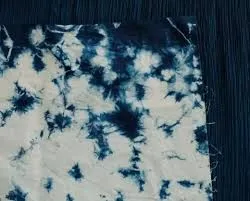Pricing Information for Sulphur Black 1 Dye Products and Variants
The Significance of Sulphur Black 1 in Textile Industries A Look at Pricing Trends
Sulphur Black 1 is a widely used dye in the textile industry, particularly for dyeing cotton and its blends. Known for its deep black color, this dye falls under the category of sulfur dyes, which are characterized by their high fixation rate and excellent wash and light fastness. In this article, we will explore the features of Sulphur Black 1, its applications, and the current trends in its pricing.
Properties and Applications
Sulphur Black 1 is valued not only for its vibrant, lasting color but also for its cost-effectiveness. The dye is remarkably stable, making it suitable for high-temperature dyeing processes. This stability contributes to its popularity among textile manufacturers who seek reliable results in bulk production.
The dye is predominantly used in the dyeing of cotton fabrics but is equally effective on other natural fibers. Its applications extend to various sectors, including fashion, home textiles, and industrial uses. As consumer demand grows for sustainable, eco-friendly textiles, the use of colorfast dyes like Sulphur Black 1 becomes increasingly important. Furthermore, Sulphur Black 1 can be utilized in blended fabrics, thus broadening its applicability across different segments of the textile market.
Pricing Trends
The pricing of Sulphur Black 1, like many other industrial chemicals, is influenced by multiple factors, including raw material costs, production technologies, and market demand. In recent years, the global textile industry has faced fluctuations in pricing due to economic conditions, especially following the disruptions caused by the COVID-19 pandemic.
sulphur black 1 pricelist

As of 2023, the pricing for Sulphur Black 1 has shown both stability and volatility. While there are periods of increased costs due to surges in oil prices—since many chemical components are petroleum-derived—there are also times when prices stabilize as supply chains recover and production resumes at normal rates.
Moreover, the growing emphasis on sustainability in production processes has led some manufacturers to invest in greener alternatives to traditional dyeing methods. This shift might affect Sulphur Black 1's pricing in the future as companies strive to meet both ecological responsibility and consumer demand for ethically produced products.
Future Outlook
Looking ahead, the demand for Sulphur Black 1 is expected to remain strong as the textile industry continues to prioritize vibrant, durable, and cost-effective dye solutions. Producers and suppliers will need to stay informed about the latest technological advancements and market trends to maintain a competitive edge.
Furthermore, as environmental regulations tighten and consumer awareness grows, there may be a trend toward more sustainable dyeing practices. This could lead to innovations in the production of Sulphur Black 1 and other dyes, possibly impacting their pricing structures.
Conclusion
In conclusion, Sulphur Black 1 plays a vital role in the textile dyeing sector, celebrated for its attractive hues and durability. While its pricing is subject to market dynamics, it remains a staple for many manufacturers. Continued attention to sustainability and technological innovation in dye production will shape the future landscape of Sulphur Black 1 and its place in the textile industry. As we move forward, stakeholders must navigate these changes with agility, ensuring that they meet market demands while adhering to ecological responsibilities.
-
The Timeless Art of Denim Indigo Dye
NewsJul.01,2025
-
The Rise of Sulfur Dyed Denim
NewsJul.01,2025
-
The Rich Revival of the Best Indigo Dye
NewsJul.01,2025
-
The Enduring Strength of Sulphur Black
NewsJul.01,2025
-
The Ancient Art of Chinese Indigo Dye
NewsJul.01,2025
-
Industry Power of Indigo
NewsJul.01,2025
-
Black Sulfur is Leading the Next Wave
NewsJul.01,2025

Sulphur Black
1.Name: sulphur black; Sulfur Black; Sulphur Black 1;
2.Structure formula:
3.Molecule formula: C6H4N2O5
4.CAS No.: 1326-82-5
5.HS code: 32041911
6.Product specification:Appearance:black phosphorus flakes; black liquid

Bromo Indigo; Vat Bromo-Indigo; C.I.Vat Blue 5
1.Name: Bromo indigo; Vat bromo-indigo; C.I.Vat blue 5;
2.Structure formula:
3.Molecule formula: C16H6Br4N2O2
4.CAS No.: 2475-31-2
5.HS code: 3204151000 6.Major usage and instruction: Be mainly used to dye cotton fabrics.

Indigo Blue Vat Blue
1.Name: indigo blue,vat blue 1,
2.Structure formula:
3.Molecule formula: C16H10N2O2
4.. CAS No.: 482-89-3
5.Molecule weight: 262.62
6.HS code: 3204151000
7.Major usage and instruction: Be mainly used to dye cotton fabrics.

